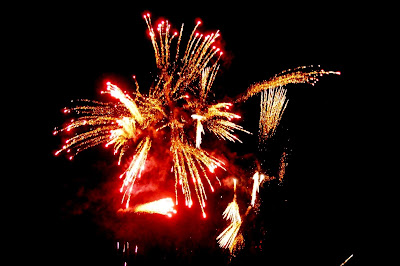By Frank N. Barker
Assistant Education Coordinator
Assistant Education Coordinator
An interesting question, as one conjures up images of a carriage loaded with nine children, two adults, their luggage, assorted servants, drivers, horses, picnic baskets, beach towels, umbrellas, sand toys...all headed down the King’s Highway for Virginia Beach or the Outer Banks.
But, alas, it does not seem to be. The Mason family was not destined to be tourists. There was work to be done. There were political endeavors to think about. Most recreation and visitation was kept to smaller groups rather than the family as a whole.
Besides, was a vacation really necessary? According to the Mason family biography The Five George Masons, life itself seemed to be a vacation, at least in George Mason’s earlier years as a country gentleman and squire of Gunston Hall. “George Mason was something of an outdoorsman—proud of his hunting guns, his horses, his hounds; enjoying riding out with his friends after deer or fox; shooting on the Great Marsh; or visiting his fishing stage on the Occoquan.” Do you need a vacation to get away from all this?
Another biographer and Mason relation, Kate Mason Rowland, wrote of visits to other houses and other families, and gatherings at church, at court, or even for elections.
It was a pleasant, easy, hospitable life, friends meeting first at one house then at another for long visits of several days at a time. They rode to the hunt with the hounds on one day; on the next, perhaps, they met at a vestry meeting or at court; they had the occasional excitement of an election and its attendant festivities….
Rather than extended vacations to exotic locales, the families of 18th century Tidewater Virginia plantations seemed content with “mini-vacations” and lodging with friend and relatives.
 |
| Vacation and leisure activities might have included a hunt, followed by a picnic. Picnic After the Hunt, Nicolas Lancret, 1735/40. Courtesy of the National Gallery of Art. |
In John Mason’s Recollections, he wrote that during his childhood at Gunston Hall,
Great hospitality reigned everywhere, and besides the social and friendly intercourse of the immediate neighborhood, the habit was for families who were connected or on friendly terms to visit each other and spend several days or weeks at the respective mansions, in a circuit of fifty or a hundred miles.
The whole family probably did not go visiting at once, but one daughter may have visited the Brents while another was staying with the Blackburns at Rippon Lodge in Dumfries. At home or away, there were dances, barbecues, fish feasts, horse races, and boat races to attend—sometimes all combined into one event that may have lasted days.
At various times in his life, George Mason left home to go to Virginia’s capital, first in Williamsburg, later in Richmond. Sometimes he went as a private citizen on business; at other times he was going as an elected official. His letters from these places to family, friends, neighbors and political allies were filled with news, advice, instructions, the state of his health…seldom did they include postcard-like inscriptions to indicate he was doing anything “touristy.”
With one noted exception. Though he wasn’t on vacation during the summer of 1787, he was visiting Philadelphia for the first time. George Mason, son John, and assorted servants were in town for a Convention of some great import that would eventually hammer out a Constitution for the United States.
 |
| Mason and his son John stayed at the Indian Queen Hotel in Philadelphia. Courtesy of the Library Company of Philadelphia. |
In the same letter, Mason talked about the Virginia Delegation’s attendance at that Sunday’s service at a Catholic chapel “more out of Compliment than Religion, & more out of Curiosity than compliment.” Mason reviews the service, from the “indifferent” preacher that he believed to be “a foreigner,” to the “Solemnity of the Apparatus,” to the “exceeding fine” music. But he was “somewhat disgusted by the Tinckling of a little bell,” which reminded Mason of raising the curtain for a “Puppet-Shew.”
Following this letter, following the instructions given to the delegates, he remained mute on activities of the Convention, did not report to family any recreational matters, but he did write one long description telling George the younger exactly what was needed to plaster walls.
And what of Mrs. Mason during her husband’s summer tour of Philadelphia? She was on one of those typical 18th century family “vacations”…visiting her sister in Dumfries.
Sources
Copeland, Pamela C., and Richard K. MacMaster. The Five George Masons: Patriots and Planters of Virginia and Maryland. Charlottesville: Published for the Board of Regents of Gunston Hall by the UP of Virginia, 1975. Print.
Mason, John. The Recollections of John Mason: George Mason's Son Remembers His Father and Life at Gunston Hall. Ed. Terry K. Dunn. Marshall, VA: EPM Publications, 2004. Print.
Rowland, Kate Mason., and Fitzhugh Lee. The Life of George Mason 1725-1792 ... including His Speeches, Public Papers, and Correspondence; with an Introduction by General F. Lee. 2 Vol. G.P. Putnam's Sons: New York; London, 1892. Print.
Rutland, Robert A., ed. The Papers of George Mason, 1725-1792. Vol. III 1787-1792. Chapel Hill: University of North Carolina, 1970. Print.







